 W
WThe Cruizer class was an 18-gun class of brig-sloops of the Royal Navy. Brig-sloops were the same as ship-sloops except for their rigging. A ship-sloop was rigged with three masts whereas a brig-sloop was rigged as a brig with only a fore mast and a main mast.
 W
WHMS Alacrity was a Cruizer-class brig-sloop built by William Rowe at Newcastle and launched in 1806. She served in the Baltic and was at the capture of Copenhagen in 1807. She captured a large privateer before herself falling victim to a French man-of-war in 1811 in an action in which her captain failed to distinguish himself. She then served in the French navy until she was broken up in 1822.
 W
WHMS Avon was a Royal Navy Cruizer-class brig-sloop built at Falmouth and launched in 1805. In the War of 1812 she fought a desperate action with USS Wasp that resulted in Avon sinking on 27 August 1814.
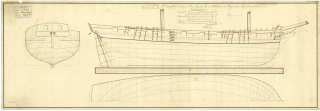 W
WHMS Bacchus was a British Royal Navy Cruizer-class brig-sloop launched in 1813 and expended as a breakwater in 1829. In between, she recaptured or captured a number of small merchant vessels.
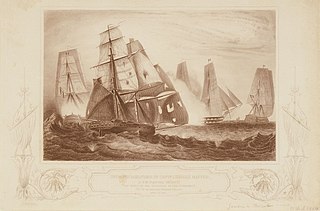 W
WHMS Beagle was an 18-gun Cruizer-class brig-sloop of the Royal Navy. She was launched in 1804, during the Napoleonic Wars. She played a major role in the Battle of the Basque Roads. Beagle was laid up in ordinary in 1813 and sold in 1814.
 W
WHMS Belette was an 18-gun Cruizer-class brig-sloop, built by Edward Larking and William Spong at Kings Lynn and launched in 1814. She was the second Cruizer-class brig-sloop to bear the name. Belette had an uneventful career performing peacetime patrols and was sold in 1828.
 W
WHMS Carnation was a Royal Navy 18-gun Cruizer class brig-sloop built by Taylor at Bideford and launched in 1807. After the French brig Palinure captured her, she was burned by the French to prevent her recapture.
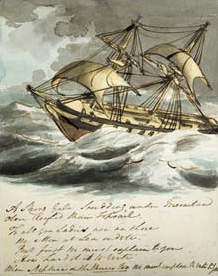 W
WHMS Clio was Cruizer-class brig-sloop of the Royal Navy, launched at James Betts' shipyard in Mistleythorn in Essex on 10 January 1807. Her establishment was 71 officers and men, 24 boys and 20 marines. She served in the Baltic during the Napoleonic Wars, accomplished the re-establishment of British rule on the Falkland Islands in 1833, and participated in the First Opium War. She was broken up in 1845.
 W
WHMS Columbine was a Cruizer-class brig-sloop launched in 1806. She served on the North America station, in the Mediterranean, off the Portuguese coast, and in the West Indies during the Napoleonic Wars. In 1823 she served briefly off Greece before wrecking off the Peloponnese in 1824.
 W
WHMS Cruizer was a Royal Navy Cruizer-class brig-sloop built by Stephen Teague of Ipswich and launched in 1797. She was the first ship of the class, but there was a gap of 5 years between her launch and the ordering of the next batch in October 1803; by 1815 a total of 105 other vessels had been ordered to her design. She had an eventful wartime career, mostly in the North Sea, English Channel and the Baltic, and captured some 15 privateers and warships, and many merchant vessels. She also participated in several actions. She was laid up in 1813 and the Commissioners of the Navy sold her for breaking in 1819.
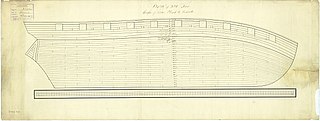 W
WHMS Derwent was launched in 1807 and later that year became one of the first ships sent by the British Royal Navy to suppress the slave trade.
 W
WHMS Dispatch was a Royal Navy Cruizer-class brig-sloop built by Richard Symons & Co. at Falmouth and launched in 1804. Dispatch was instrumental in the capture of a 40-gun French frigate and was active at the Battle of Copenhagen in 1807. She also sailed on the Jamaica station. She was broken up relatively early, in 1811.
 W
WHMS Emulous was a Royal Navy 18-gun Cruizer-class brig-sloop, built by William Row at Newcastle and launched in 1806. She survived an inconclusive but bloody battle with a French frigate during the Napoleonic Wars and captured a number of prizes, including two privateers, on the Halifax station during the War of 1812 before she was wrecked in 1812.
 W
WHMS Epervier was an 18-gun Cruizer-class brig-sloop of the Royal Navy, built by Ross at Rochester, England, and launched on 2 December 1812. USS Peacock captured her in 1814 and took her into service. USS Epervier disappeared in 1815 while carrying dispatches reporting the signing of a treaty with the Dey of Algiers.
 W
WHMS Espoir was a Cruizer-class brig-sloop of the Royal Navy, launched in 1804. She served during the Napoleonic Wars, primarily in the Mediterranean, and then briefly on the North American station. She was broken up in April 1821.
 W
WHMS Ferret was a Royal Navy Cruizer-class brig-sloop built by Benjamin Tanner at Dartmouth and launched in 1806, 19 months late. She served on the Jamaica, Halifax, and Leith stations during which time she took three privateers as prizes before she was wrecked in 1813.
 W
WHMS Fly (1813) was a Royal Navy Cruizer-class brig-sloop built by Jabez Bailey at Ipswich. She was ordered 23 April 1812, launched in 16 February 1813 and commissioned May 1813.
 W
WHMS Frolic was an 18-gun Cruizer-class brig-sloop of the Royal Navy. She was built by Boole, of Bridport and was launched on 9 February 1806. Although she took part in the capture of Martinique, Guadaloupe, and Saint Martin, she appears to have had an uneventful career until 8 October 1812, when the American sloop-of-war USS Wasp captured her after a fierce fight. Later that day the British recaptured Frolic and captured Wasp. Frolic was broken up in 1813.
 W
WHMS Grasshopper was a Royal Navy 18-gun Cruizer-class brig sloop launched in 1813. She was the second ship of the class to bear the name; the first Grasshopper had been stranded at Texel and surrendered to the Batavian Republic on Christmas Day 1811. The present Grasshopper remained in service until sold in 1832. She then became a whaler in the Southern Whale Fisheries, making four voyages between 1832 and 1847.
 W
WHMS Halcyon (1813) was a Royal Navy Cruizer-class brig-sloop that Edward Larking & William Spong built at King's Lynn and launched in 1813. She had one of the shortest lives of any vessel of her class.
 W
WHMS Magnet was a Cruizer-class brig-sloop built at Robert Guillaume’s yard at Northam and launched in 1807. She served in the Baltic, where she took two prizes, one an armed privateer, before wrecking in 1809.
 W
WHMS Moselle was a Cruizer-class brig-sloop of the Royal Navy, launched in 1804. She served during the Napoleonic Wars in the Mediterranean, the Caribbean, and the North American station. She was sold in 1815.
 W
WHMS Musquito. was a Royal Navy Cruizer-class brig-sloop built by John Preston at Great Yarmouth and launched in 1804. She was commissioned in October 1804 under Commander Samuel Jackson. She served in the North Sea and the Baltic, and Jackson supervised the first successful rocket attack in Europe at Boulogne in 1806. After the war she served off Africa and captured some slavers. She was broken up in 1822, having been laid up since 1818.
 W
WHMS Mutine was a Royal Navy 18-gun Cruizer-class brig-sloop, built by Henry Tucker at Bideford and launched in 1806. During her career she was in combat in Danish waters, in the Bay of Biscay, and at Algiers. She also visited North America, South America, and the West Coast of Africa. She was sold in 1819.
 W
WHMS Pandora was launched in 1806. She captured two privateers before she was wrecked in February 1811 off the coast of Jutland.
 W
WHMS Pelican was an 18-gun Cruizer-class brig-sloop of the Royal Navy, launched in August 1812. She is perhaps best known for her capture in August 1813 of the brig USS Argus. When the navy sold Pelican in 1865 she was the last Cruizer-class vessel still in service.
 W
WHMS Pelorus was an 18-gun Cruizer-class brig-sloop of the British Royal Navy. She was built in Itchenor, England and launched on 25 June 1808. She saw action in the Napoleonic Wars and in the War of 1812. On anti-slavery patrol off West Africa, she captured four slavers and freed some 1350 slaves. She charted parts of Australia and New Zealand and participated in the First Opium War (1839–1842) before becoming a merchantman and wrecking in 1844 while transporting opium to China.
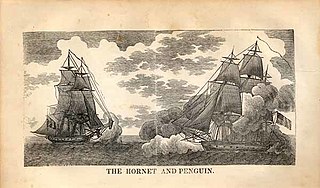 W
WHMS Penguin was a Royal Navy Cruizer-class brig-sloop launched in 1813. In 1815 USS Hornet captured Penguin in a battle that took place after the end of the War of 1812. Hornet then scuttled Penguin as she was too damaged to merit keeping.
 W
WHMS Primrose (1807) was a Royal Navy Cruizer-class brig-sloop built by Thomas Nickells, at Fowey and launched in 1807. She was commissioned in November 1807 under Commander James Mein, who sailed her to the coast of Spain on 3 February 1808.
 W
WHMS Racehorse was a Royal Navy 18-gun Cruizer-class brig-sloop built by Hamilton & Breeds and launched in 1806 at Hastings. She served in the Channel, where she captured a small privateer, and in the East Indies, where she participated in the capture of Isle de France and the operations around it. She was wrecked in 1822.
 W
WHMS Recruit was an 18-gun Cruizer-class brig-sloop of the Royal Navy, launched in 1806 at Sandwich, Kent. She is best known for an act of pique by Commander Warwick Lake, who marooned a seaman, and for an inconclusive but hard-fought ship action under Commander Charles John Napier against the French corvette Diligente. She captured a number of American vessels as prizes during the War of 1812 before being laid up in 1815 and sold for breaking up in 1822.
 W
WHMS Redwing was a Cruizer-class brig-sloop of the British Royal Navy. Commissioned in 1806, she saw active service in the Napoleonic Wars, mostly in the Mediterranean, and afterwards served off the West Coast of Africa, acting to suppress the slave trade. She was lost at sea in 1827.
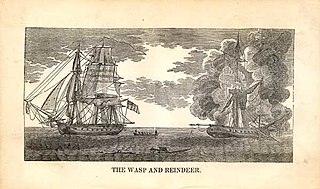 W
WHMS Reindeer was a Royal Navy 18-gun Cruizer-class brig-sloop of the Royal Navy, built by Samuel & Daniel Brent at Rotherhithe and was launched in 1804. She was built of fir, which made for more rapid construction at the expense of durability. Reindeer fought in the Napoleonic Wars before succumbing in 1814 to the guns of USS Wasp during the War of 1812.
 W
WHMS Ringdove was a Royal Navy 18-gun Cruizer-class brig-sloop that Matthew Warren built at Brightlingsea and launched in 1806. She took some prizes and participated in three actions or campaigns that qualified her crew for clasps to the Naval General Service Medal. The Admiralty sold her in 1829 to Samuel Cunard, who would go on to found the Cunard Line.
 W
WHMS Rover was a Royal Navy Cruizer-class brig-sloop laid down in 1804 but not launched until 1808. She served in the North Sea, off the north coast of Spain, in the Channel, and on the North American station. She captured two letters-of-marque and numerous merchant vessels before being laid-up in 1815. She then sat unused until she was sold in 1828.
 W
WHMS Sappho was a Cruizer class brig-sloop built by Jabez Bailey at Ipswich and launched in 1806. She defeated the Danish brig Admiral Yawl in a single-ship action during the Gunboat War, and then had a notably successful two months of prize-taking in the first year of the War of 1812. She was wrecked in 1825 off the Canadian coast and then broken up in 1830.
 W
WHMS Scorpion was a Royal Navy Cruizer-class brig-sloop built by John King at Dover and launched in 1803. She was the first of the class to be built since the launching of Cruizer in 1797. Scorpion had a long and active career during the Napoleonic Wars, earning her crews three clasps to the Naval General Service Medal when the Admiralty authorized it in 1847, two for single-ship actions. She also took a number of prizes. Scorpion was sold in 1819.
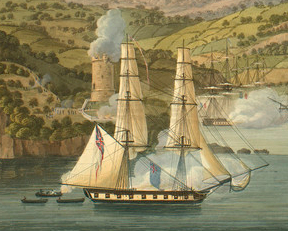 W
WHMS Scout was a Cruizer-class brig-sloop built by Peter Atkinson & Co. at Hull and launched in 1804. She participated in a number of actions and captured several privateers in the Mediterranean during the Napoleonic Wars. The Navy sold her in 1827. In 1829 she reappeared as the British Southern Whale Fisheries whaler Diana. Diana made three voyages for Daniel Bennett & Son until condemned after an on-board explosion in April 1843 towards the end of her fourth voyage.
 W
WHMS Scylla was an 18-gun Cruizer-class brig-sloop of the Royal Navy. The first to bear the name Scylla, she was launched in 1809 and broken up in 1846.
 W
WHMS Sophie was an 18-gun Cruizer class brig-sloop of the Royal Navy. She served during the Napoleonic Wars and the War of 1812. During the War of 1812 Sophie participated in the economic war against American trade, capturing or destroying numerous small merchant vessels, and in an unsuccessful attack on Fort Bowyer, Alabama. Later, she moved to the East Indies where she served in the First Anglo-Burmese War. The Admiralty sold Sophie in 1825.
 W
WHMS Surinam was a Cruizer-class brig-sloop built by Obadiah Ayles at Topsham, Exeter and launched in 1805. She captured one privateer during her twenty-year career and took part in two campaigns before she was broken up in 1825.
 W
WHMS Swallow was a Cruizer-class brig-sloop launched in December 1805, nine months late. She served the Royal Navy through the Napoleonic Wars, capturing numerous privateers. After the end of the wars she was broken up in 1815.
 W
WHMS Weazel was a Royal Navy 18-gun Cruizer-class brig-sloop, launched in 1805 at Topsham, Devon. She saw active service in and around the Mediterranean during the Napoleonic Wars resulting in her crews earning three clasps to the Naval General Service Medal, was decommissioned in 1815, and was sold for breaking in 1825.
 W
WHMS Zebra, was an 18-gun Cruizer-class brig-sloop of the Royal Navy. She was built of teak in the East India Company's Bombay Dockyard and launched in 1815 as the last of her class. She chased pirates in the Mediterranean, just missed the Battle of Navarino, sailed to East Indies, where she almost foundered, and on to Australia, chased Malay pirates, and was wrecked in 1840 during the Syrian War.